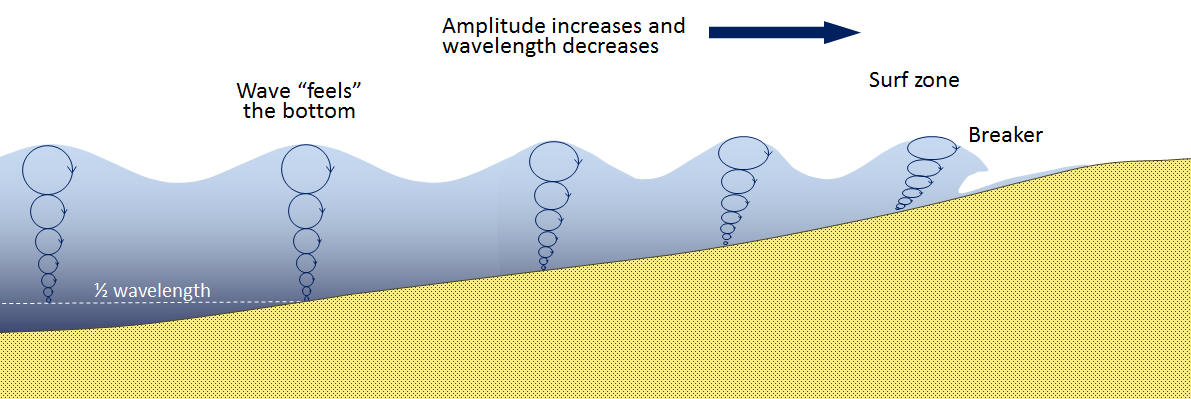As water waves approach a beach, their wavelengths become shorter. Why?
I know that wavelength and speed are proportional. So, the speed of the water waves must decrease as they approach the beach. But, why?
I know that wavelength and speed are proportional. So, the speed of the water waves must decrease as they approach the beach. But, why?
1 Answer
It is assumed that question pertains to waves in ocean.
Important parameters of waves formed in ocean are shown in the figure below.

Amplitude is also called Wave Height.
As the wave moves across the surface of the water, a point on the water surface describes a circle with a diameter which is equal to the amplitude of the wave. This circular motion is transmitted to the water below up to a depth of
 )
)
The velocity of waves also called wave celerity and denoted by symbol
#C_"o"=g/(2pi)T# .......(1)
where#g# is acceleration due to gravity and#T# is time period of waves.
As the waves move towards shallow waters these start interacting with ocean bed when depth is less than half wave length. The motion of water particles starts becoming elongated due to drag and the wave slows down.
It must be remembered that a fundamental characteristic of waves is that wave period

Here, wave celerity can be expressed as
#C_"s"=sqrt(gh)# ......(2)
where#h# is depth of water.
and using the relation
#lambda_"s"=Tsqrt(gh)# ......(3)
Equation (1) and (2) explain why waves slow down and also why their wavelengths become shorter and shorter as these approach the beach.
Ultimately the waves lean forward, and eventually break as shown in the figure above.
